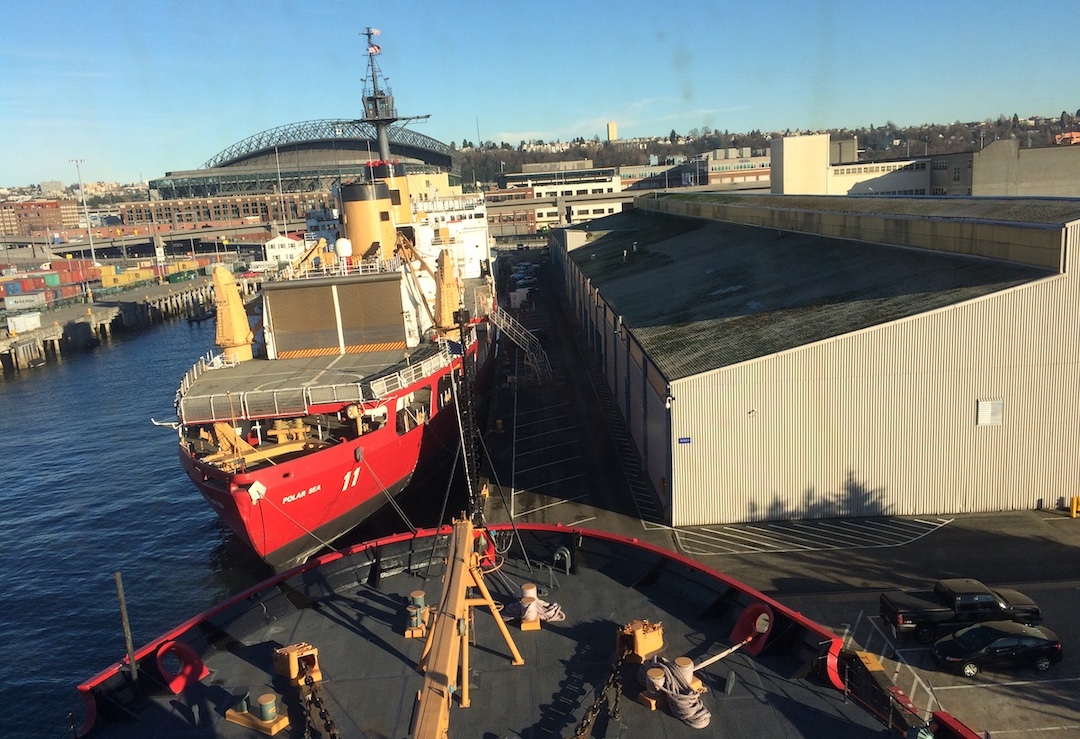
Ever since America’s coastguard accepted that its icebreaker fleet is on its last legs, its focus has been on repairing the one that it has while it awaits delivery of the first of its replacements. The other option, putting one that is already at sea into federal service, has, until this month, repeatedly been rejected as being both unnecessary and too expensive. Now, though, it appears that the service’s brass have changed their position as they increasingly face the prospect of being left with no functioning heavy icebreaker that can service its Antarctic stations.
Currently the Polar Star has Antarctic resupply duties, but more than 50 years will have passed since it entered service by the time the first Polar Security Cutter, as the six icebreakers approved by Congress (three of which have been funded) are known, is ready to replace it in 2027, three years later than originally planned. In 2006, already well past its prime, the Polar Star was taken out of service and placed in reserve, only to be put back into service two years later, when it underwent an overhaul that was only supposed to keep it afloat for a decade.
That the Polar Star and the Coast Guard’s icebreaking capability is showing its age is an understatement; a 2019 engine-room fire in the Southern Ocean temporarily left the US without a heavy icebreaker. What’s worse, had the Polar Star needed rescuing, it would have been another country — perhaps rival Russia or China — that would have had to come to the rescue; America’s only other existing heavy icebreaker, the Polar Sea (pictured above), has been out of service since 2010 and is cannibalised by its sister ship for spare parts.
Previously, leasing a new icebreaker was rejected in favour of continued life-extending maintenance on the Polar Star, but with uncertainty about when the new icebreakers would be ready — or if the Polar Star could keep going until they are — the option of leasing an ice breaker has never been taken off the table. Now, the Coast Guard appears to be pursuing it actively; on 3 May, it published what is known as a call for information from anyone that may have a commercially owned vessel “capable of operating in or around the Arctic” available for purchase in 2023 or 2024.

To be considered, the ship needs to have been built in America and capable of operating for at least 60 days without resupply. It must also be able to operate year-round in second-year ice and break ice at least a metre thick at a continuous speed of three knots. It also needs to have a helideck that can accommodate Coast Guard helicopters and have an on-board medical treatment facility.
Currently, there are two ships that meet those requirements. One of them, the Nathaniel B. Palmer, is leased by the National Science Foundation and not available to the Coast Guard. That leaves the Aiviq (pictured above). An ice-hardened tug supply vessel built by Edison Chouest in 2012 for $200 million (€192 million) to assist Shell’s oil exploration in the Beaufort and Chukchi seas, primarily by towing and laying anchors, it was left unemployed when Shell ended its exploration programme there.
Mothballed until last year, the Aiviq is currently leased by Australia to assist with its Antarctic operations. Its ice classification allows it to work for only four months out of the year there, but it meets the requirement that it be capable of six months of Arctic operations. Smaller and less powerful than the Polar Star, and requiring significant work before it would met Coast Guard standards, few would say the Aiviq is an ideal candidate, but, right now at least, the coasties can’t be choosers.
Kevin McGwin, PolarJournal
Featured image: US Coast Guard / Petty Officer 3rd Class Diolanda Caballero
More about this topic






I think you mean the Nathaniel B. Palmer. Hawthorne was an author. 🙂
Thank you for reading and the correction, yes, it’s the Nathaniel B. Palmer.
Kind regards
The PolarJournal Team